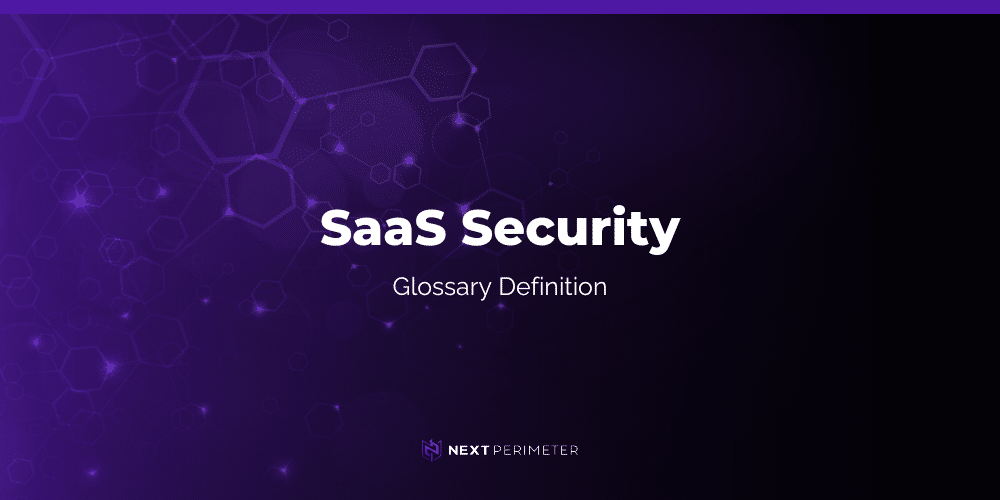
Securing SaaS applications has become a critical priority for businesses in today’s digital landscape. With cloud-based solutions driving collaboration and innovation, understanding the essential terms and concepts related to SaaS security is vital for protecting sensitive data and ensuring operational efficiency. This glossary provides clear definitions and insights into key SaaS security principles, tools, and practices to help businesses stay informed and secure.
What is SaaS?
SaaS (Software as a Service) is a cloud-based delivery model where software applications are hosted by a provider and accessed via the internet. Unlike traditional software that is installed on individual devices or servers, SaaS apps are centrally managed, updated, and scaled by the provider.
Examples
Popular SaaS applications include Microsoft 365, Google Workspace, Salesforce, Slack, and Dropbox.
Key Benefits
Accessibility: Use apps from any device with an internet connection.
Scalability: Quickly scale up or down based on business needs.
Cost Efficiency: No need for expensive hardware or infrastructure.
Risks
Shadow IT: Apps adopted without IT oversight can expose sensitive data.
Misconfigurations: Improper settings can leave data vulnerable.
Account Compromise: Stolen credentials are a major threat to SaaS environments.
How It Differs from PaaS and IaaS
PaaS (Platform as a Service): Provides tools for developers to build and deploy applications (e.g., AWS Elastic Beanstalk, Google App Engine).
IaaS (Infrastructure as a Service): Delivers virtualized computing resources (e.g., AWS EC2, Microsoft Azure).
SaaS: Fully managed, ready-to-use applications for end users.
What is SaaS Security?
SaaS Security refers to the tools, practices, and principles designed to protect SaaS applications and the data within them from unauthorized access, breaches, and misconfigurations.
Core Principles
Zero Trust: No user, device, or network is inherently trusted. All access must be authenticated and verified.
Access Control: Use tools like SSO, MFA, and conditional access policies to restrict unauthorized access.
Visibility: Monitor SaaS app activity to identify risks and anomalies.
Why It Matters
SaaS apps often hold sensitive business data, and misconfigurations or poor access controls can create vulnerabilities that lead to breaches or compliance failures. Addressing these risks is crucial for maintaining the security and integrity of business operations.
How Next Perimeter Secures SaaS
Next Perimeter centralizes access control with SSO and MFA to simplify authentication and enhance security. It also monitors and detects compromised accounts using AI and threat modeling, ensuring proactive protection. Additionally, the platform enforces conditional access policies to ensure device compliance and geofencing, adding another layer of security to protect sensitive data.
What is SSPM (SaaS Security Posture Management)?
SSPM is a framework and toolset designed to monitor, manage, and secure the configurations, permissions, and settings of SaaS applications. It helps ensure compliance, mitigate risks, and reduce the likelihood of breaches caused by misconfigurations.
Key Functions of SSPM
Configuration Management: Identifies risky settings (e.g., public file sharing, disabled MFA).
Compliance Checks: Ensures SaaS apps meet regulatory standards like GDPR or HIPAA.
Access Monitoring: Tracks permissions and activity to identify excessive privileges or anomalies.
Automation: Automates remediation of misconfigurations and compliance violations.
Do SMBs Need SSPM?
For many SMBs, SSPM is overkill. Next Perimeter’s approach focuses on identity and device security (e.g., SSO, Zero Trust access) as a more practical and scalable solution.
What is SSO (Single Sign-On)?
Single Sign-On (SSO) is an authentication method that allows users to access multiple applications with one set of login credentials.
Benefits of SSO
Simplifies Access: Reduces the number of passwords users need to remember.
Improves Security: Centralizes login management and supports MFA for stronger protection.
Enhances Productivity: Minimizes login friction for users.
SSO and SaaS Security
By implementing SSO, businesses can enforce Zero Trust principles by requiring verification of every login attempt. Next Perimeter extends SSO with advanced monitoring and conditional access policies.
What is Zero Trust?
Zero Trust is a security model based on the principle of “never trust, always verify.” It requires strict identity verification and continuous monitoring, regardless of whether users are inside or outside the network.
Key Components
Identity Verification: Enforce MFA and monitor user behavior.
Device Compliance: Ensure only secure, managed devices can access apps.
Least Privilege Access: Restrict access to only what users need.
Continuous Monitoring: Detect and respond to threats in real time.
Next Perimeter’s Zero Trust Approach
Protecting identities and devices to secure SaaS apps does not require app-specific configurations. Next Perimeter uses threat modeling and AI to identify and respond to anomalies, ensuring a robust security posture.
What is Conditional Access?
Conditional Access is a security practice that grants or denies access to applications based on specific conditions, such as location, device compliance, or user behavior.
Examples of Conditions
Location: Deny access from untrusted geographies.
Device Health: Require encryption and antivirus before granting access.
Behavioral Anomalies: Block access if login patterns seem unusual.
Why It’s Important for SaaS Security
Conditional access allows businesses to enforce dynamic policies that adapt to real-time risks, forming a key part of the Zero Trust model.
What is MFA (Multi-Factor Authentication)?
Multi-Factor Authentication (MFA) adds a second layer of security by requiring two or more factors to verify a user’s identity. These factors can include:
Something You Know: Passwords or PINs.
Something You Have: A device, like a smartphone.
Something You Are: Biometrics, like a fingerprint or facial recognition.
How MFA Enhances SaaS Security
Multi-Factor Authentication protects against stolen credentials by requiring a second form of verification and ensures that even if one factor is compromised, the account remains secure.
